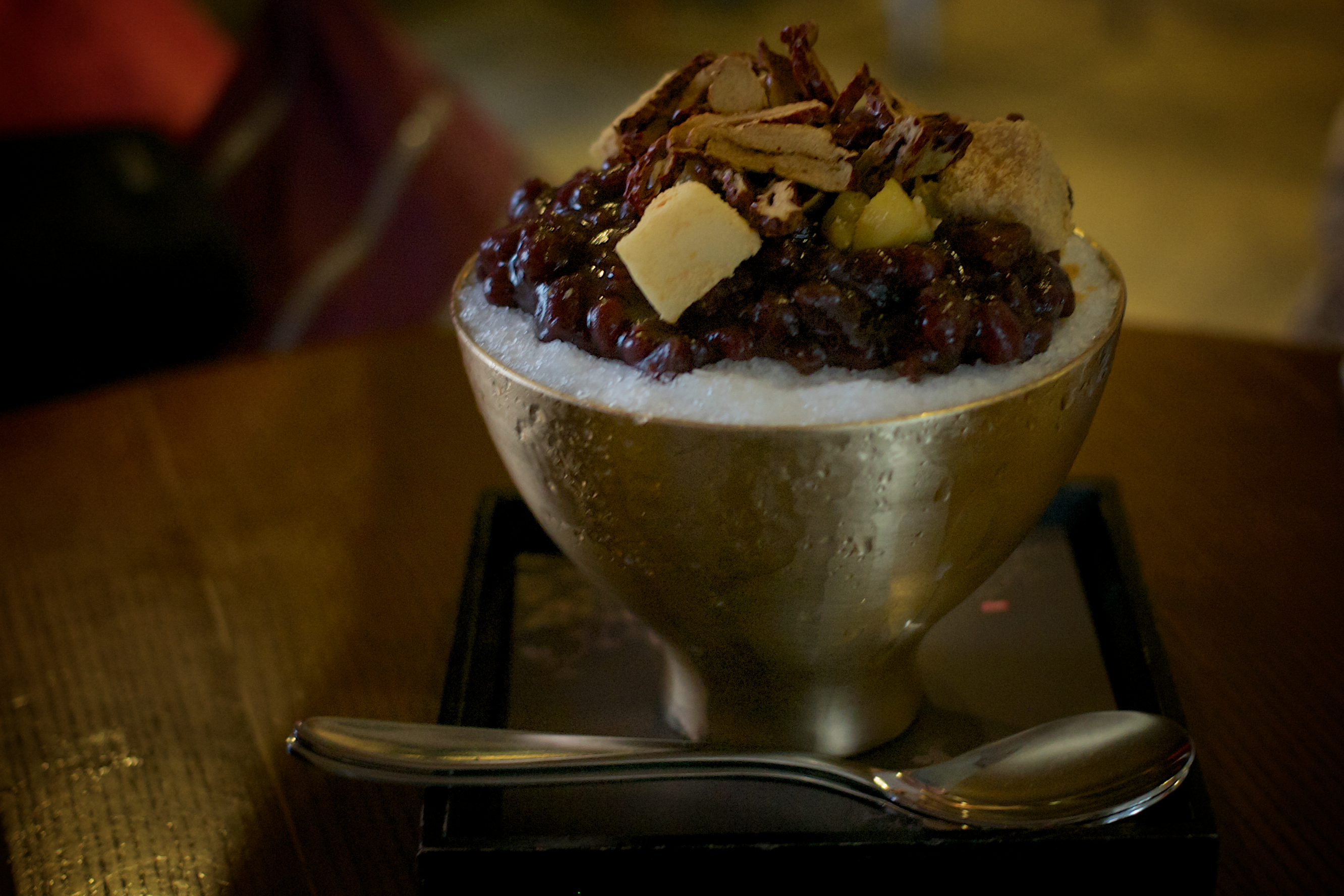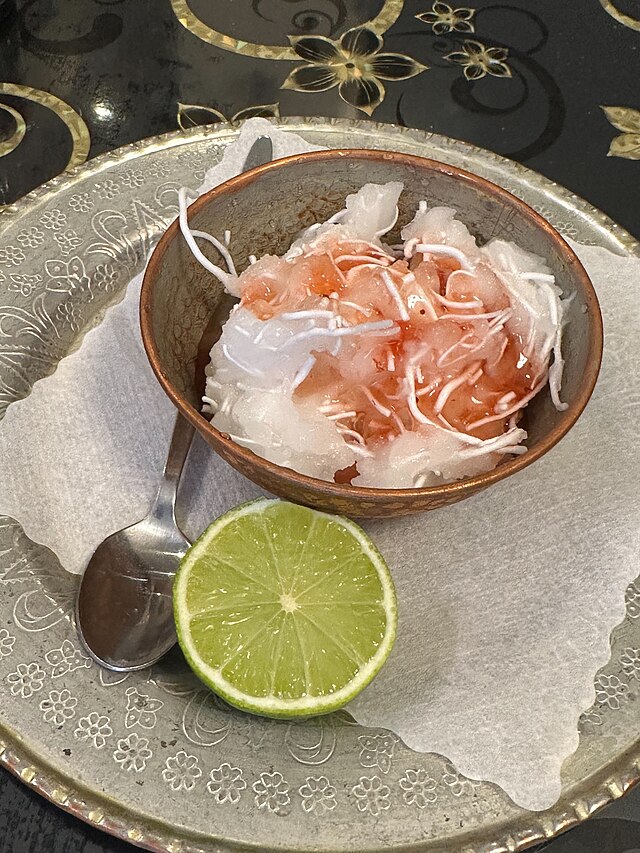When we think of summer in Korea or Iran, the first things that come to mind might be the heat, the festivals, and the shared laughter among families. But hidden among these memories are sweet, icy treasures—Patbingsu and Faloodeh—that once defined summer for generations. Though these countries lie far apart, Korea and Iran have long shared deep cultural similarities—in values, family, art, and now, even in how they cooled down their summers in the past as simple as a bowl of summer dessert, that connection gently reappears.
In old Korea, Patbingsu was a seasonal joy, made long before cafés and electric blenders. During the Joseon Dynasty, ice was harvested in winter and stored in underground ice houses called seokbinggo (석빙고), which kept blocks of ice cool through summer. When summer came, vendors or families would shave the ice using a hand-cranked ice grinder—often made of metal with a spinning blade and a bowl underneath. The ice shavings were light and fluffy, like snow. On top, they would add boiled sweet red beans (pat), homemade tteok (rice cakes), and maybe fresh seasonal fruits. It was simple, natural, and made with care—more than just a dessert, it was a family memory. it was full of care and intention—shared among family or friends on hot afternoons.

On the other side of Asia, in Iran, the traditional dessert Faloodeh has even older roots, dating back to ancient Persia. The making of Faloodeh also depended on ice stored in yakhchals—ingenious domed underground structures built to keep ice cold in the desert heat. Ice would be brought out in summer, and families or street vendors would combine it with thin rice noodles, made earlier by hand from rice flour. These noodles were mixed into a fragrant syrup made from rose water and sugar, then gently frozen and stirred by hand to get the right texture—something between a slush and sorbet. It was often served with tart lime juice or sour cherry syrup to balance the sweetness.

Though their ingredients differ, the spirit behind Patbingsu and Faloodeh is beautifully similar. Both were made using clever, low-tech methods to preserve and serve ice in hot climates. Both desserts were handmade with local ingredients, shared with loved ones, and deeply rooted in cultural traditions. And both reflect the value placed on refreshment, balance, and togetherness in summer. they reflect a shared rhythm of life. Korea and Iran, with their strong family cultures and love for poetry, music, and nature, found similar ways to cool the body and warm the heart during summer.
Today, Patbingsu and Faloodeh are still enjoyed—sometimes in modern forms, sometimes in shops—but they’ve lost a bit of that slow, loving process of the past. Yet, for those who remember or rediscover them, they carry more than coolness—they carry memory.
In the sound of a hand-cranked grinder or the scent of rose water over ice, Korea and Iran meet—two cultures, one soul of summer.
How about this article?
- Like3
- Support0
- Amazing2
- Sad0
- Curious0
- Insightful0


